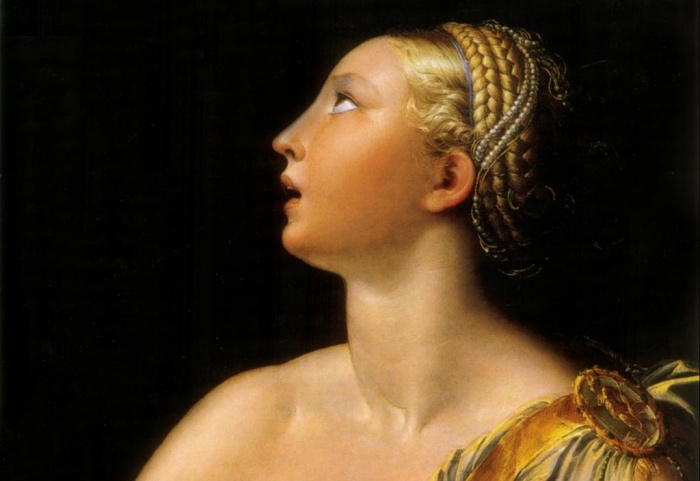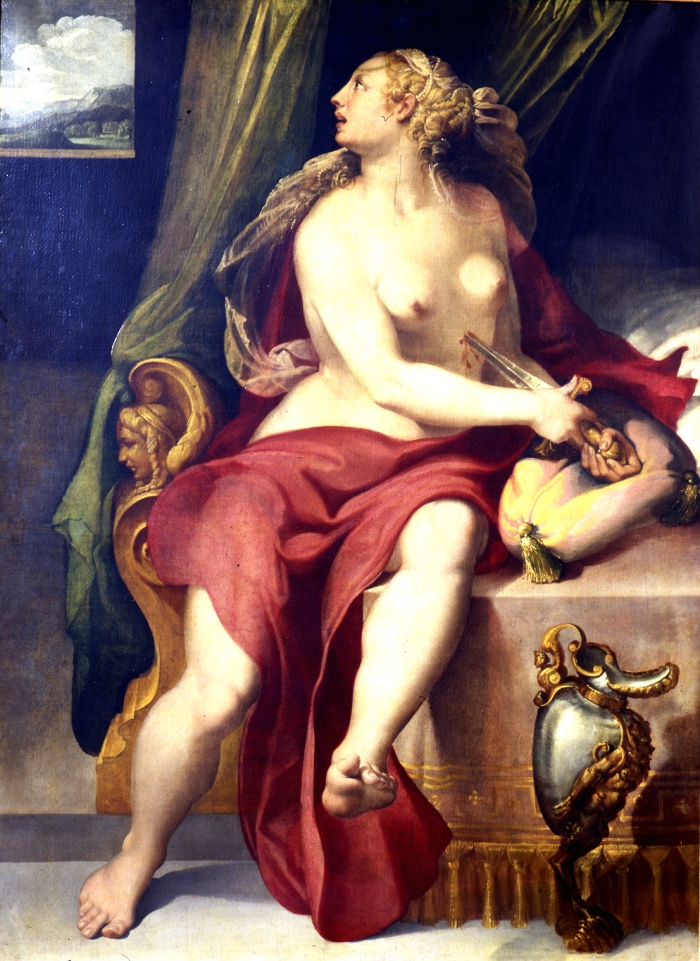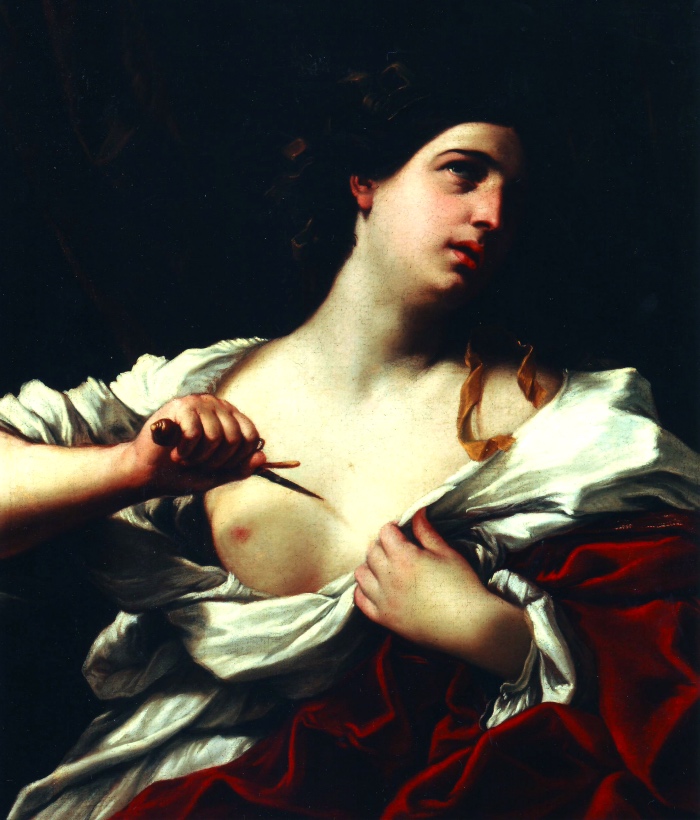
Girolamo Francesco Maria Mazzola detto il Parmigianino, Lucrezia, 1540 circa. Napoli, Museo di Capodimonte.
LUCREZIA ROMANA
Lucretia is the most fascinating heroine of the antiquity.
A woman whose story is suspended between truth and legend, and portrayed in several works of art.
Thanks to her, the Roman people found the strength to stage a rebellion against the monarchy ruled by the Family of Tarquin and to establish the Roman Republic.
At this point, some of you are probably wondering: “Who is Lucretia?”
In this post I’ll tell you Lucretia’s story and I’ll show you the artworks which made her famous.

Bartolomeo Passerotti, Lucrezia, 1565-1570 circa. Bologna, Pinacoteca Nazionale (Polo Museale Emilia Romagna)
STORIA DI LUCREZIA
According to Livy, a Roman historian, Lucius Tarquinius Superbus (Tarquin the Superb), the 7th and last King of Rome, had a cruel son, Sextus Tarquinius.
During the siege of Ardea, the king’s sons together with the nobles, to kill time, were having a good time by coming back to Rome secretly in order to see what their women were doing during their absence Tarquinius Collatinus knew that his wife Lucretia was the most faithful and virtuous woman.
So, he brought with him other nobles, including Sextus Tarquinius to see her.
The beauty and virtue of Lucretia fascinated Sextus, who wanted to possess her.
A few days later, unbeknown to Collatinus, Sextus returned to Collatia, where he was hospitably received by Lucretia. But after dinner, the man entered Lucretia’s bedroom to assault her with a sword.
The woman tried to resist him, but Sextus forced her to submit to his sexual advances by telling her the alternative was that he would kill her and one of her slave, place their bodies together, and claim he had defended her husband’s honour, when he caught her having adulterous sex.
At this point, Lucretia surrendered, but as soon as Sextus left, she sent a message to both her father and her husband imploring them to come back as soon as possible, because a tragedy had happened. As they arrived home, Lucretia explained what had happened, and she killed herself with a dagger she was hiding under her dress.
Thanks to Lucretia’s drastic measures, the Roman people had the determination to rise up, driving the Tarquin family off and to establish the Roman Republic.
SEE ALSO: Bordini’s women photogallery.
LUCREZIA NELL’ARTE
Many writers narrated Lucretia’s story, including Cicero, Livy, Seneca, Ovid, Boccaccio and Shakespeare.
During the Italian Renaissance Lucretia’s story became one of the favourite subject for nuptial paintings, and it was held as an example of woman virtue.
Several artists painted Lucretia, including Raphael, Cranach, Filippino Lippi, Perugino, Guido Reni, and Artemisia Gentileschi.
But Lucretia’s story is also the chance for the contemporaries to reflect upon violence, both physical and verbal, against women today.

Guido Reni, Lucrezia.

Tiziano Vecellio, Il suicidio di Lucrezia.

Artemisia Gentileschi, Lucrezia.

